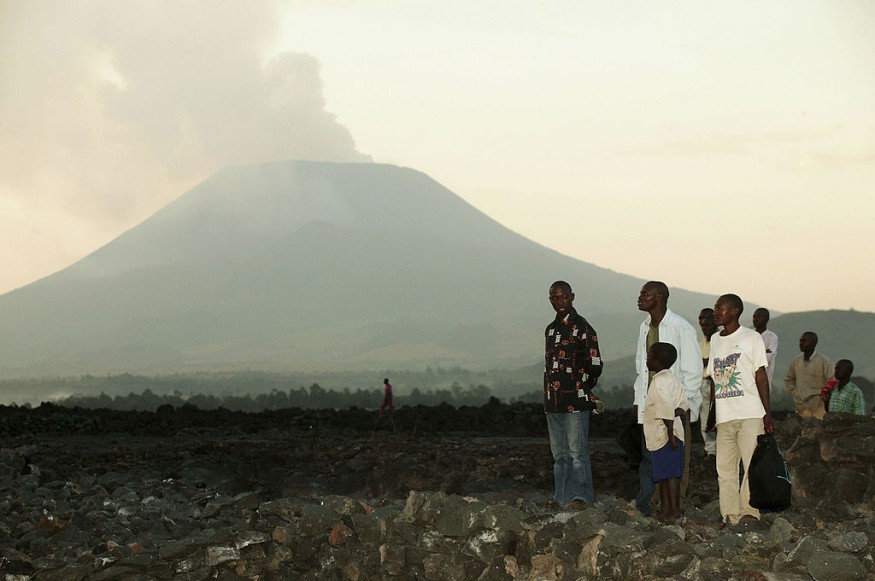If you haven't heard about the 2002 volcanic eruption in the Congo, you probably haven't heard about Mount Nyiragongo. Mount Nyiragongo is located in the Democratic Republic of the Congo and part of the Virunga volcanic chain.
Some say its geographical location on the highly active segment of the African Great rift is quite rare and a major reason why it was considered dangerous for communities in and around Goma, the capital of North Kivu province in the eastern Democratic Republic of the Congo.
The volcano's current location sustains rise of magma from about 100 km beneath the Earth's surface, and the lava is so condensed that it flows extremely fast and impossible to outrun.
The sudden opening of the rift on 2002 caused a disastrous eruption, killing around 100 people and damaging thousands of homes and buildings in the town of Goma and villages near the upper volcano flanks.

Rifting and volcanic activity in the region
After the 2002 eruption, Mount Nyiragongo garnered international attention and several studies because of its uniqueness. Apparently, the political situation at the time was hostile due to complex relationship between the national government in Kinshasa and a local government. The warning which was excellently imposed by the Goma Volcano Observatory was disregarded because of the feud which led to thousands of homeless people across the borders of Congo and Rwanda.
The inconsistent monitoring of Mount Nyiragongo and its geological complexities pose a significant threat in the region. Its existence in the east of the Democratic Republic of the Congo features a continuous pool of lava fizzling within its summit crater. Geohazards expert say it is one of the most dangerous volcanoes in Africa.
Nyiragongo lava is remarkably fluid and can move up to 40 miles per hour. Eruptions can also emit large amounts of lethal carbon dioxide gas to the atmosphere, harming millions of people in its shadow. Experts say many people die from the volumes of gas in the air produced by the carbon dioxide-rich magma.
The rifting process can't be controlled but the risks can be reduced
The 2002 crisis which had gone out of control due to the difficult social and political conditions in Eastern Congo, and couldn't have been managed without the aid of United Nations. A group of international scientists were sent to the site to conduct a year-long program along with the Congolese volcanologists to reach those affected by lava flows from Mount Nyiragongo.
Despite the warning that cities should be relocated and not rebuilt in the region, the advice was not followed and even expanded the area up to four times. However, the National Institute of Geophysics and Volcanology in Pisa, Italy, designed a program of hazard evaluation and risk mitigation as a measure to protect the city of Goma against future lava flows.
Experts in the field simulated the 2002 lava flow event to characterize and create the best possible artificial barrier to shield the town from future unforeseen event such as the 2002 shenanigan. It cannot be stressed enough that these efforts might be put to waste once more if local and national governments don't learn the risks and provide resources for sectors such as the Goma observatory to fully operate.
© 2025 NatureWorldNews.com All rights reserved. Do not reproduce without permission.





